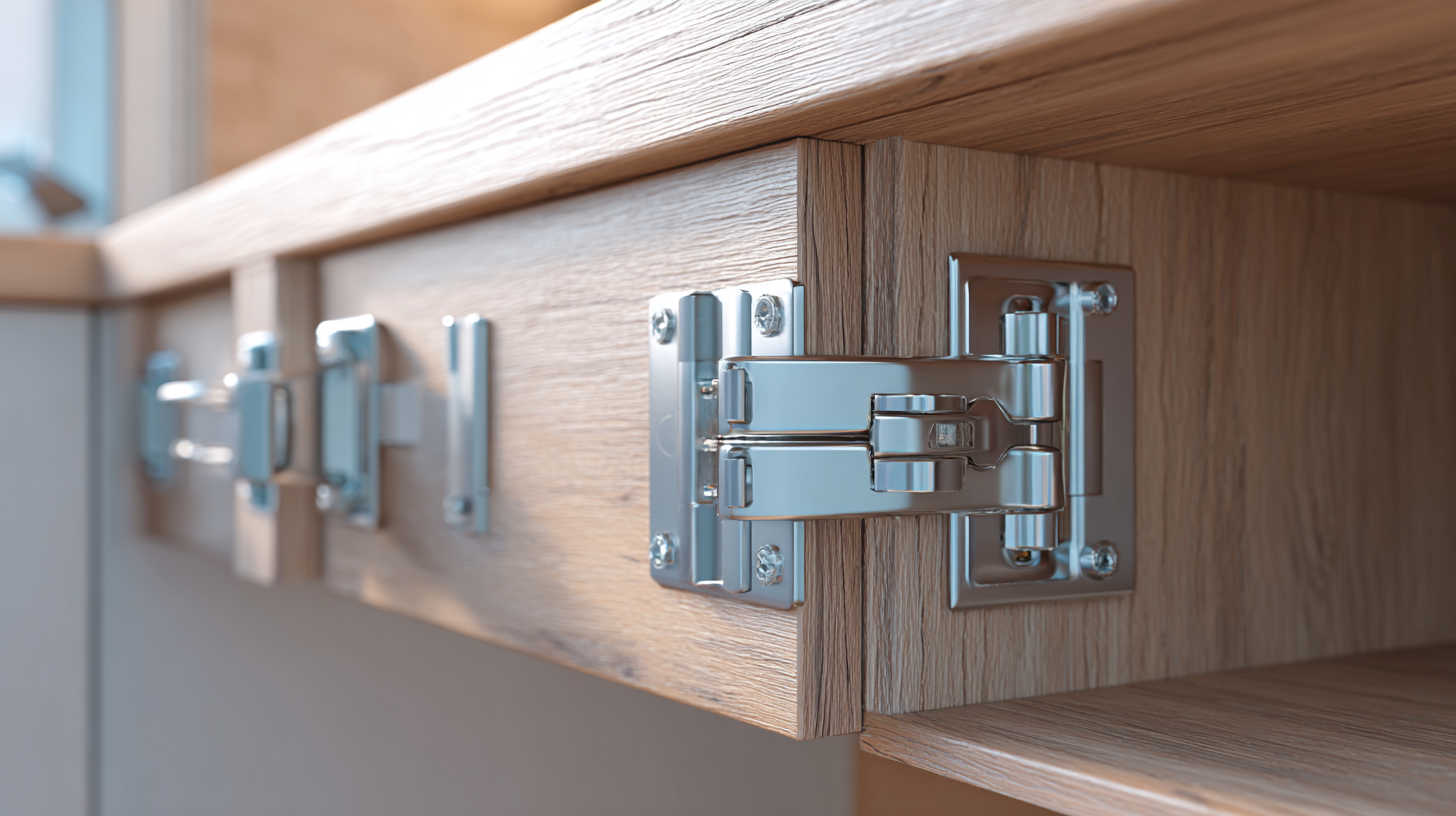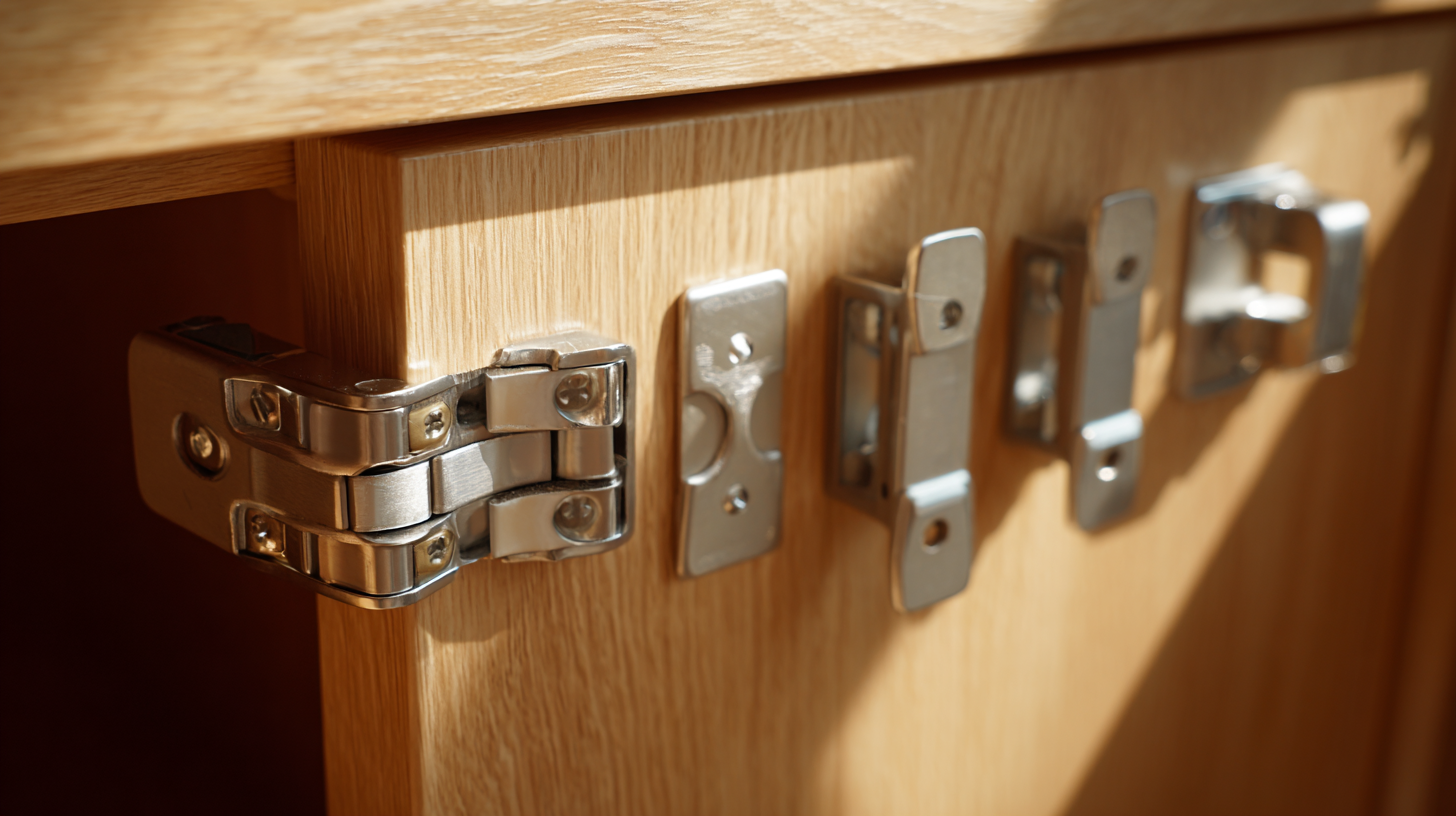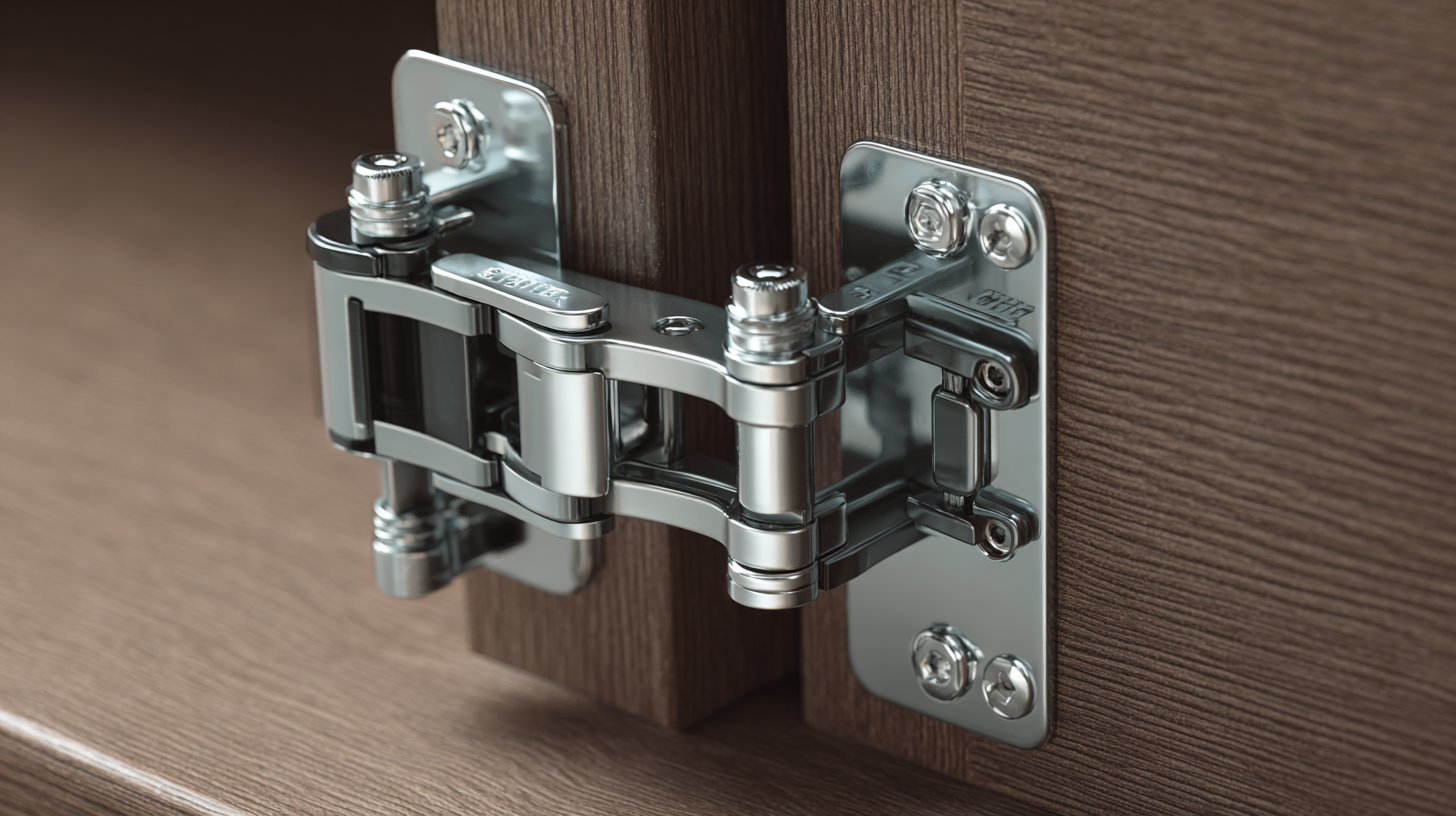Leave Your Message
As we look towards 2025, the landscape for home improvement and interior design continues to evolve, with a notable shift towards innovative hardware solutions that enhance functionality and user experience. One such advancement is the rising popularity of Soft Close Cabinet Hinges, which have become indispensable in modern cabinetry. According to a recent market analysis by Grand View Research, the global cabinet hardware market is projected to reach $75 billion by 2025, with soft close mechanisms driving a significant portion of this growth. The advantages of these hinges extend beyond aesthetic appeal; they mitigate noise, prevent damage, and facilitate a smoother user experience, aligning perfectly with contemporary consumers' demands for convenience and durability. As we explore the trends shaping the future of cabinet hinges, it's essential to consider the global procurement perspective, ensuring that manufacturers and suppliers harness these advancements effectively to meet the increasing demand.

In modern interior design, the choice of hardware plays a crucial role in enhancing both aesthetics and functionality. Soft close cabinet hinges, in particular, have become a staple in contemporary spaces, reflecting a growing trend toward convenience and sophistication. According to a report by Grand View Research, the global soft close hinge market is projected to reach $2.6 billion by 2025, with a compound annual growth rate (CAGR) of 6.8%. This surge is driven by an increasing preference for home improvement and high-end cabinetry, signifying that consumers value the seamless operation these hinges provide, minimizing noise and enhancing comfort.

Additionally, the importance of soft close cabinet hinges extends beyond mere functionality; they contribute significantly to the overall value of interior design projects. A survey conducted by the Kitchen Cabinet Manufacturers Association revealed that over 70% of home buyers prefer cabinets equipped with soft close hinges, indicating that such features are not just a luxury but a standard expectation. This trend illustrates a shift in consumer priorities, emphasizing the need for a harmonious blend of style and practicality in modern interiors. By integrating these hinges, designers are able to create spaces that not only look good but also elevate the user experience, making them an essential component in contemporary cabinet design.
When selecting soft close cabinet hinges, certain key technical specifications are crucial to ensure optimal performance and durability. One of the primary considerations is the hinge's load capacity, which must align with the weight of the cabinet doors. A hinge designed for heavier doors typically features robust materials such as stainless steel, enhancing strength and ensuring longevity. Additionally, the design and construction of the hinge should minimize friction to provide a smooth, quiet close, which is a hallmark of the soft close mechanism.
Another vital factor to consider is the hinge's adjustability. Quality soft close hinges often allow for adjustments in multiple dimensions—depth, side, and height—to ensure precise alignment of the cabinet doors. This feature is essential for achieving a seamless appearance and functionality in modern cabinetry. Furthermore, look for hinges with integrated dampening systems, which not only enhance the closing action but also reduce wear and tear over time.
As the demand for stylish yet functional kitchen and bathroom designs grows, understanding these specifications will help in making informed decisions for cabinet hardware in 2025 and beyond.
As we look ahead to 2025, the trend towards enhanced durability and performance in soft close cabinet hinges is being revolutionized by emerging materials and cutting-edge technologies. The incorporation of innovative, sustainable materials is becoming paramount, aligning with the global shift towards environmentally friendly practices in the manufacturing sector. For instance, advancements in graphene-augmented composites not only improve the structural integrity of hinges but also contribute to a reduced environmental footprint, making them an attractive option for modern cabinetry.
Moreover, the application of 2D layered materials is set to redefine the performance metrics of soft close hinges. These materials, known for their exceptional durability and lightweight properties, offer significant advantages in energy efficiency and resilience against wear and tear. Coupled with new production technologies that enhance precision and durability, such developments promise to create a new standard for cabinet hardware. The transformation is further accelerated by the integration of AI in material science, enabling faster and smarter design processes that prioritize both functionality and sustainability.
| Material | Durability Rating (Cycles) | Weight Capacity (lbs) | Features | Market Availability |
|---|---|---|---|---|
| Stainless Steel | 100,000 | 70 | Corrosion-resistant, Adjustable | Widely Available |
| Zinc Alloy | 50,000 | 60 | Cost-effective, Smooth Operation | Commonly Available |
| Nylon | 30,000 | 50 | Lightweight, Low Noise | Specialty Markets |
| Aluminum | 80,000 | 65 | Lightweight, Rust-proof | Easily Accessible |
| Plastic Composite | 25,000 | 40 | Environmental Friendly, Cost-efficient | Limited Availability |
The soft close cabinet hinges industry is experiencing significant transformation, fueled by a range of global market trends. One of the most prominent trends is the increasing demand for high-quality, durable materials. As consumers become more discerning, they seek products that not only enhance functionality but also promise longevity and minimal maintenance. This has led manufacturers to invest in advanced materials and innovative production techniques, ensuring their offerings meet evolving customer expectations.

Another crucial trend is the growing emphasis on sustainability within the procurement process. As environmental awareness rises, both manufacturers and consumers are prioritizing eco-friendly products. The soft close cabinet hinges market is no exception, with more suppliers focusing on sustainable sourcing practices and recyclable materials. This shift not only reflects consumer preferences but also aligns with the global push towards greener manufacturing processes, positioning brands favorably in a competitive marketplace.
Additionally, the integration of smart technology is reshaping the cabinet hinge landscape. Innovations such as soft close mechanisms that can be controlled via smart home systems are gaining traction as connected living becomes more prevalent. As the market evolves, suppliers that embrace these technological advancements will likely lead the way, catering to a tech-savvy audience looking for convenience and modern solutions in their home design.
As we progress towards 2025, sustainability is becoming a focal point in the production of soft close cabinet hinges. Manufacturers are increasingly prioritizing eco-friendly practices, recognizing that consumers demand more than just functionality and design. This shift is not only about reducing waste but also involves selecting sustainable materials that minimize environmental impact throughout the product lifecycle.
The hinges for furniture market is witnessing a growing trend toward utilizing recyclable and biodegradable materials in their production processes. By adopting innovative materials and manufacturing techniques, companies can reduce their carbon footprint while still delivering high-quality products. This approach resonates well with the global procurement perspective, where buyers are actively seeking suppliers who align with their sustainability goals. As businesses in various sectors strive to enhance their sustainability credentials, the demand for responsibly produced soft close cabinet hinges will likely increase, making it a key trend in the industry moving forward.
